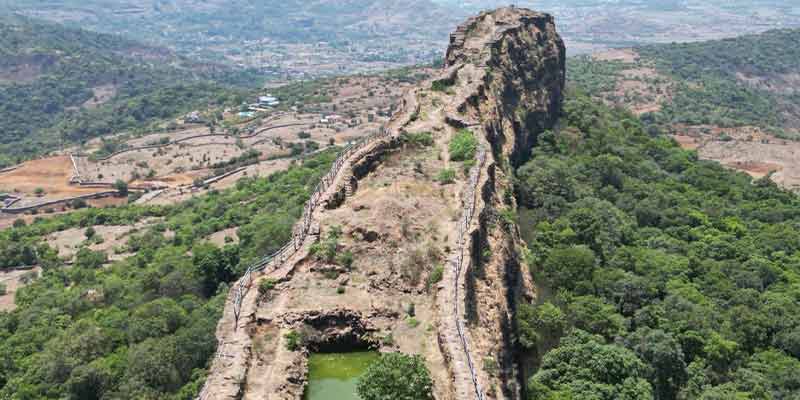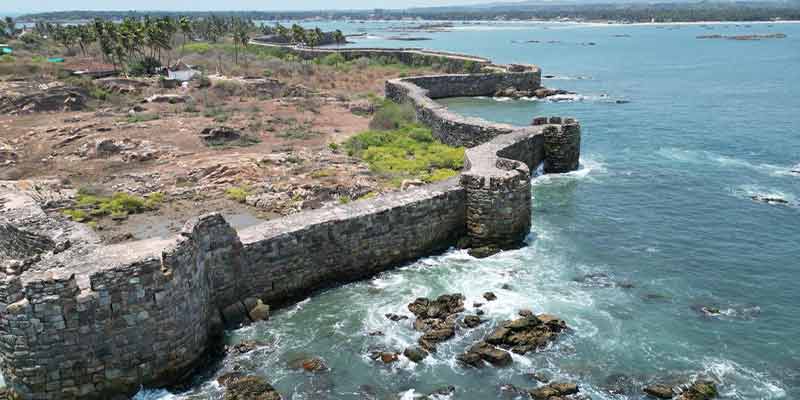- India
- Jan 30
India nominates ‘Maratha Military Landscapes’ for UNESCO tag
‘Maratha Military Landscapes’ representing the extraordinary fortification and military system envisioned by the Maratha rulers will be India’s nomination for inclusion in the UNESCO World Heritage List for the 2024-25 cycle.
At present, there are 42 World Heritage Sites in India, out of which 34 are cultural sites, seven are natural sites whereas one is mixed site.
Maratha Military Landscapes of India
• The ‘Maratha Military Landscapes of India’, which developed between the 17th and 19th centuries, represent an extraordinary fortification and military system envisioned by the Maratha rulers.
• This extraordinary network of forts, varying in hierarchies, scales and typological features, is a result of integrating the landscape, terrain and physiographic characteristics distinctive to the Sahyadri mountain ranges, the Konkan Coast, Deccan Plateau and the Eastern Ghats in the Indian Peninsula.
• The 12 components of this nomination are Salher fort, Shivneri fort, Lohagad, Khanderi fort, Raigad, Rajgad, Pratapgad, Suvarnadurg, Panhala fort, Vijay durg, and Sindhudurg in Maharashtra, and Gingee fort in Tamil Nadu.
• These components, distributed across diverse geographical and physiographic regions, showcase the strategic military powers of the Maratha rule.
• Salher fort, Shivneri fort, Lohagad, Raigad, Rajgad and Gingee fort are hill forts, Pratapgad is hill-forest fort, Panhala is hill-plateau fort, Vijaydurg is coastal fort whereas Khanderi fort, Suvarnadurg and Sindhudurg are island forts.
• The inception of the Maratha military ideology dates back to the 17th century during the reign of Maratha King Chhatrapati Shivaji Maharaj by 1670 and continued through subsequent rules until Peshwa rule till 1818.
What is a World Heritage Site?
• The United Nations Educational, Scientific and Cultural Organisation (UNESCO) seeks to encourage the identification, protection and preservation of cultural and natural heritage around the world considered to be of outstanding value to humanity.
• This is embodied in an international treaty called the ‘Convention Concerning the Protection of the World Cultural and Natural Heritage’, adopted by UNESCO in 1972.
• A World Heritage Site is a place having a special cultural or physical significance and outstanding universal value to humanity. It may be a building, a city, a complex, a desert, a forest, an island, a lake, a monument or a mountain.
• Sites recognised as being of Outstanding Universal Value are inscribed each year on the World Heritage List.
• To be included on the World Heritage List, sites must be of outstanding universal value and meet at least one out of ten selection criteria. These criteria are regularly revised by the Committee to reflect the evolution of the World Heritage concept itself.
Who lists World Heritage Sites?
• The International World Heritage Programme administered by the UNESCO World Heritage Committee establishes the sites to be listed as World Heritage Sites.
• ICOMOS assisted UNESCO in writing the Convention text, in which it was appointed advisory body to the World Heritage Committee. Its role is to support the implementation of the cultural side of the Convention.
• The France-based International Council on Monuments and Sites (ICOMOS) is an international non-governmental organisation that comprises professionals, experts, representatives from local authorities, companies and heritage organisations, and is dedicated to the conservation and enhancement of architectural and landscape heritage around the world.
• The World Heritage Committee defines the use of the World Heritage Fund and allocates financial assistance upon requests from States Parties.
• It has the final say on whether a property is inscribed on the World Heritage List.
• The Committee consists of representatives from 21 of the States Parties to the Convention elected by their General Assembly.
• It examines reports on the state of conservation of inscribed properties and asks States Parties to take action when properties are not being properly managed.
• It also decides on the inscription or deletion of properties on the List of World Heritage in Danger.
Manorama Yearbook app is now available on Google Play Store and iOS App Store



